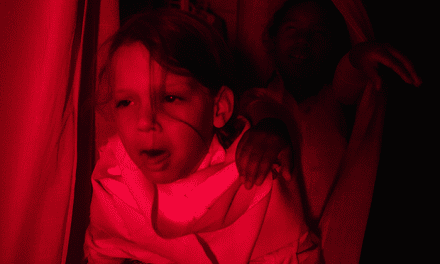At what age should you teach a toddler to self-soothe? Around six months is the ideal time to teach a toddler to self-soothe. During this age, babies typically start to sleep throughout the night. Starting from these months, they will self-soothe because they are now learning to develop a sleep pattern.
The Golden Rule To Teach A Toddler To Self-Soothe
From day 1 of teaching self-soothing, you should leave the room when your toddler is asleep. The first week is the hardest when teaching toddlers to sleep independently. But, if done consistently, it shouldn’t take more than 2 or 3 weeks to establish the new sleep habit.
Every baby is different, but it’s essential to establish a routine, especially at night, so that everyone can enjoy a good night’s sleep. It would be easiest to stick to a rigid bedtime routine of a warm bath, a story while enjoying a warm drink, and lots of cuddles before settling your toddler down to sleep. Hopefully, they have had a busy day and will be tired and happy to fall asleep almost immediately.
How To Teach A Toddler To Self-Soothe?
Be calm, soothing, and brief when the toddler wakes up during the night. Tell the child it is time to sleep, give them a kiss or a hug and then leave the room. In time he will learn the sleep routine and only wake up if there’s an illness or any problem.
Common Self-Soothing Behaviors Found In Children
- Thumb-sucking
- Fingernail biting
- Cuticle picking
- Sucking on clothing or other objects
- Rocking
- Pulling hair, eyebrows, or eyelashes
- Hair twirling
Hints On Your Toddler’s Self-Soothe Tricks
Assuming your toddler is in a crib instead of a starter bed, they may be unaware that they must be in their bed all night. This is because, on average, until a child is 2.5 years old, they don’t understand the concept cognitively. You could experience that it may take several weeks for them to learn this new skill while you are consistently returning them to their bed. On safety grounds, you could consider a safety gate at their door. Doing this eases you from worrying that they’ll wander around the house when they wake up. Your child may wake up more during the night if they are teething or feeling discomfort.
How Many Naps Does Your Toddler Need?
On average, children at 14 months need 11 hours of sleep during nighttime and 2 hours over the course of 2 naps during the day.
Be Consistent
A consistent approach and plan for night waking will make things easier for you. Nursing to sleep may not work. Your toddler may be drowsy or confused, so check the daytime feeding, as going through the night without feeding is a milestone for any parent.
Sleep Training When A Toddler Can’t Self-Soothe
If you use a pacifier, then at 14 months, you may notice your toddler putting back their pacifier into their mouth by themselves. They need some gentle coaching. When they wake, just begin pointing to the pacifier in their bed. If they are in a regular bed, you could even put a little basket in the corner of the bed with the pacifier inside. When they wake up, point to it and say, “That’s your pacifier; you can reach it now.” At this stage, you shouldn’t put it in their mouth but let them do it by themselves. In the beginning, point to the pacifier and see if the kid understands the message. In case they continue whining and asking you to put it, place it in their hands instead. Let them put it in their mouth. Sooner or later, you have to direct them to do it by themselves.
For them to truly self-soothe, your goal is to stop replacing the pacifier for them. Otherwise, you will notice that it has become the new sleep crutch for the parent to find the pacifier and put it back in the child’s mouth.
Takeaway
It’s essential when you’re working on this step that you are putting your child to bed drowsy but awake. Often, parents allow their toddlers to get too close to sleep, only to find that their child is crying for them because they don’t understand how to fall asleep without help. Follow this simple guide to teach a toddler to self-soothe. You will soon notice your child drifting off into sound sleep independently.






